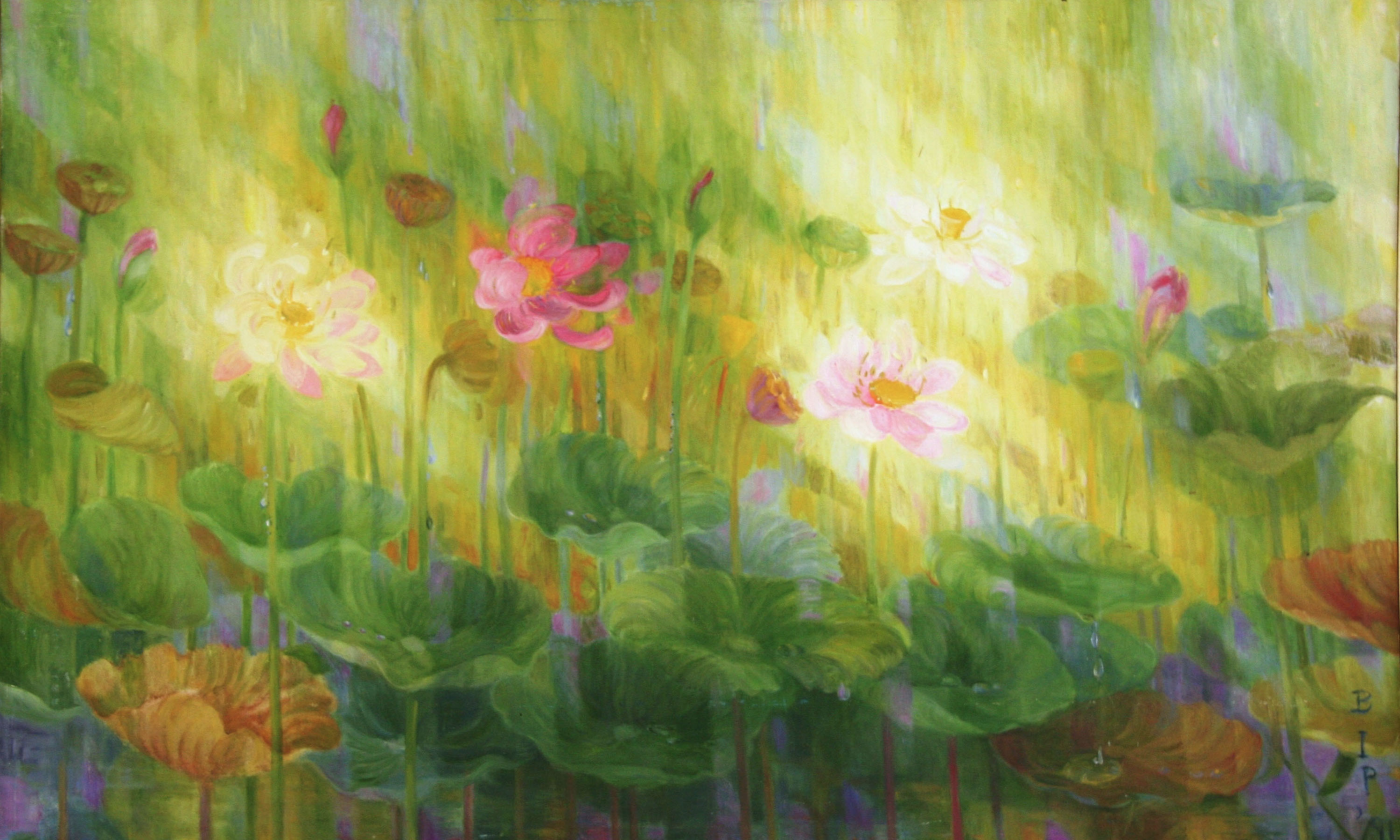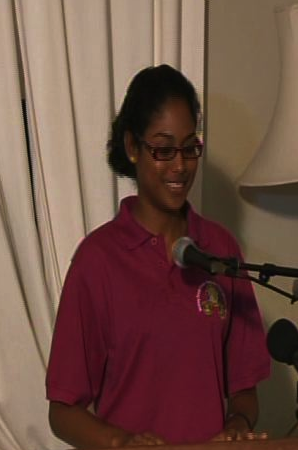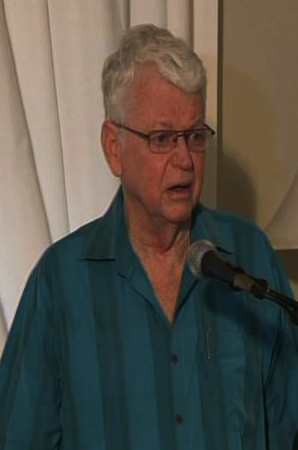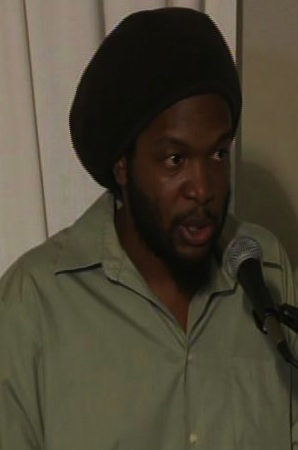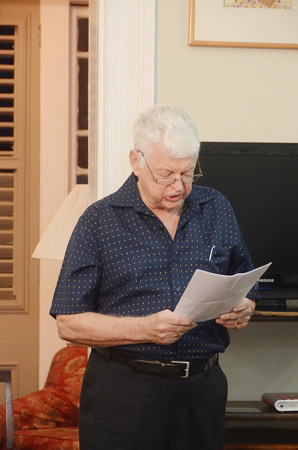Title: ‘Rose of Gold’
Item: Poem
Reader: Maryam Bacchus
Date: March 2012
You Tube link: http://www.youtube.com/watch?v=wOk3YIpj15c
Shadows Will Hide The Sun
Title: ‘Shadows Will Hide The Sun’
Item: Poem
Reader: Dr Ian Mc Donald
Date: March 2012
You Tube link: http://www.youtube.com/watch?v=WRVfz-5Ezto
Speaking to the Gods
Title: ‘Speaking to the Gods’
Item: Poem
Reader: Dr Ian Mc Donald
Date: March 2012
You Tube link: http://www.youtube.com/watch?v=V7kUA0f4ZYA
The Comfort of All Things
Title: ‘The Comfort of All Things’
Item: Poem
Reader: Dr Ian Mc Donald
Date: March 2012
You Tube link: http://www.youtube.com/watch?v=vcEwMMJvAc8
The Universe Illustrated by Hubble
Title: ‘The Universe Illustrated by Hubble’
Item: Poem
Reader: Kojo Mc Pherson
Date: March 2012
You Tube link: http://www.youtube.com/watch?v=tmFmLMVqqUQ
Workshop Materials – Young Writers Workshop Part II
THE BUILDING BLOCKS OF POEMS
SITUATION OF THE POEM: Who is speaking? About what? To whom?
MESSAGE/THEME: What is the poet concerned about? What message is being conveyed? The situation of the poem may be a kind of parable: a poem about a deer being killed by a car may be a discussion of the destructiveness of technology; a poem relating the story of a werewolf may be a criticism of gossiping.
CLASSIFICATION:
Epic (narrative, serious subject, lengthy) Dramatic, Lyric
STRUCTURE OF THE POEM: Does the poem have a regular shape? Regular stanzas? Is it broken up into sections?
SECTIONS: Trace the development of the argument in the different sections of the poem. Can you find a turning point when the argument/tone changes direction?
SPEAKER: Point of view is always important in literature. Who or what is speaking? Is the choice of speaker effective?
RHYME:
End rhymes (at line ends: rhyme/time; fruit/boot. Notice rhyme is about the sound, not the spelling!) Half-rhymes/near rhymes (dark/lurk; apple/supple; blade/blood) Internal rhymes (Rhyming words that are not at the line-ends)
What does rhyming achieve?
Rhymes may suggest order (or inevitability) Half rhymes may suggest a failed attempt to find order and harmony Some rhymes produce humour (as in limericks). Some are ironic (as in Pope’s poetry) Much modern poetry dispenses with rhymes and regular stanzas. We call this poetry FREE VERSE.
RHYTHM:
Rhythm is created by the particular arrangement of long and short (stressed and unstressed) syllables.
Compare the following rhythm patterns:
And on a sudden, lo the level lake OR The shining sun is hidden in the sky (v–,v–,v–) And the cheers and the jeers of the young muleteers (vv–,vv–,vv–,vv–) Cannon to right of them, cannon to left of them (–vv,–vv) Now and then we hear them call (–v,–v,–v,–v)
What does rhythm achieve?
The rhythm can suggest rocking, dancing, marching, slow, heavy footsteps, etc. Absence of rhythm may suggest a distressed state of mind or a hesitant fumbling and stumbling to find the answers.
2: Notice that key ideas and important words are often signaled by a disruption of the established rhythm.
SOUND EFFECTS: In addition to rhyme and rhythm, the poet uses other sound effects: Alliteration
Assonance Onomatopoeia
DICTION:
Poetry appeals to our senses and our emotions. Look out for diction (carefully chosen words) that create a particular emotion or that stir one of your senses.
IMAGERY:
The term imagery covers all the poetic devices that create a picture (image) in your mind. The main devices are:
- Simile Metaphor
- Personification Allusion
MOOD:
the blossoms were full blown/like polished poems.
A curious tale that threaded through the town Through graying women sewing under eaves, Red flowers hang their heads in awful sorrow the Holy Ghost over the bent/ World broods (allusion to Genesis account of Creation) What feeling(s) do you have as you read? Those are the MOOD of the poem. You may feel angry, dismayed, amused, reverent, shocked, etc.
TONE:
What attitude does the speaker take to the subject in hand? That is the TONE of the poem. The tone may be reverent, philosophical, mocking, sarcastic, flippant, complaining, disrespectful, etc.
Moray House Trust Young Writers of Poetry Workshop Session # 2 ~ May 18, 2012
Facilitated by Dr. Joyce Jonas
Sponsored by Scotiabank
NOTES _ re Materials: Hand outs/Guides & References for the Young Writers Workshop
NOTES _ re Materials: Hand outs/Guides & References for the Young Writers Workshop
a: “Martin’s Mantras”: a collection of quotes from Martin Carter on writing poetry compiled by Ian Mc Donald.
b: “Less is More” theme for the Workshop with examples to underline this concept (example of AJS manuscript as recalled by Ian)
c: Ernesto Cardenal’s “Rules” for poetry (Nicaraguan priest & poet)
d: “Keep A Journal” concept and recommendation to young poets elaborated by Ian Mc Donald who brought a few of his own journals as living examples.
“d: Writing Is A Muscle” – Paloma Mohamed. This concept – the practice of writing was further elaborated and emphasised by Paloma in the workshop.
e: Charles Darwin passage on nature read by Ian used as one of the themes in the Workshop and elaborated in discussion etc.
f: The genre of “ProsePoems”
Poets who are Activists. Martin was cited as the supreme example of this. He always stayed true to his poetry and did not proselytize to its detriment etc. Also the War Poets, the Romantics, Religious Poets. Supreme examples are Donne, George Herbert, even Blake.
g: Performance Poets – example of young poet who uses lines from popular songs as inspiration/ start points for her own poems, often turning the said lines on their heads etc. etc.
AGENDA For Young Writers Poetry Workshop # 1
AGENDA For Young Writers Poetry Workshop # 1
Moray House Trust ~ April 12, 2012. 10.00 a.m. – 2.00 p.m.
9.30 – 9.45 Participants arrive, register, each submits an original poem of their own, and settle in.
10.00-10.15 Welcome by VandaRadzik, Chair of MHT Board of Directors Opening Remarks & Overview of Programme by Dr Paloma Mohamed – Workshop Facilitator
10.15 – 11.15 Poet Ian McDonald talks about his process How he writes poetry; where he gets ideas; drafting; re-drafting; his first publishing; his thoughts/views on poetry, etc… Questions & Open Discussion.
11.15 – 12.15 Basic Introduction to Critiquing Poetry by Dr Joyce Jonas Types of poems; main parts of poem; literary devices, what makes a good poem etc. Basic guidelines / tips / pointers towards the making of a good poem.
12.15 – 12.45 BREAK
12.45 – 1.45 One’s Own Work Facilitated by Paloma Mohamed & Vanda Radzik
Four (4) pre-selected original poems* from the upcoming poets will be read / presented and the group will respond by supportively critiquing the work and suggesting ways to make them work better. This session will be used for the poets to review their own work and use the pointers/ tips/ info from both Ian McDonald & Dr. Jonas.
* Poems Selection Process: All participants will be bringing one original poem of their own. These poems will all be put into a bag or box and four will be randomly selected to be used in the exercise.
Method for Exercise on “One’s Own Work”
Each of the selected four selected poems will be read first in silence by everyone and then read aloud by a person who is not the author. There will be feedback for about 10 mins per poem from the group. All poets will then work for about 15 mins. on a brief review of his/her own poem taking on board some of the feedback and guidelines provided in the critiquing session by Dr Jonas and from Ian McDonald’s sessions. Finally, the four selected poems, having been reviewed and possibly improved by their respective authors will then be re-read and posted for further review. Writers will continue to review and improve poems in preparation for the next workshop session. The aim is to introduce some tools and techniques and to then have the young writers apply / utilise these as needed.
1.45 – 2.00 Proposed Next Steps Wrap Up & Closing of Workshop
2.00 – 2.30 LUNCH
Memories of Martin
Title: Memories of Martin
Item: Commentary
Speaker: Dr Ian Mc Donald
Date: December 2011
You Tube link:
http://www.youtube.com/watch?v=YqlW0jffhy4&feature=plcp Continue reading “Memories of Martin”
